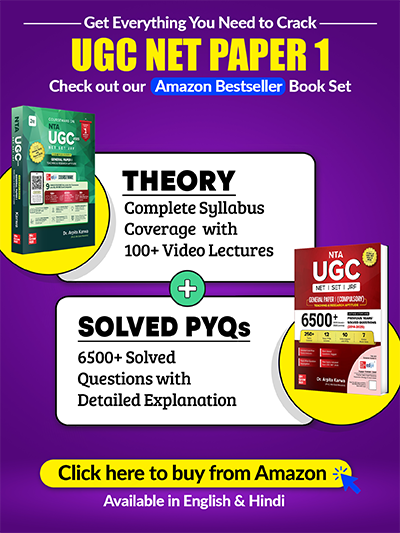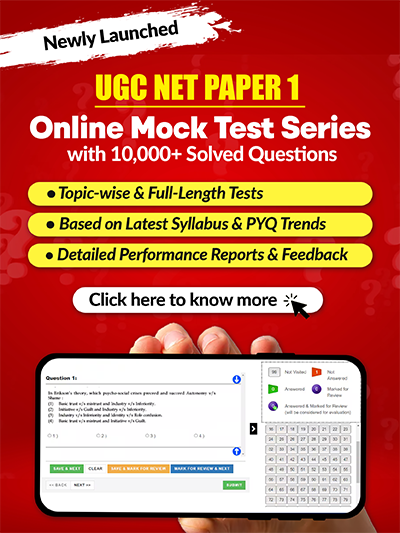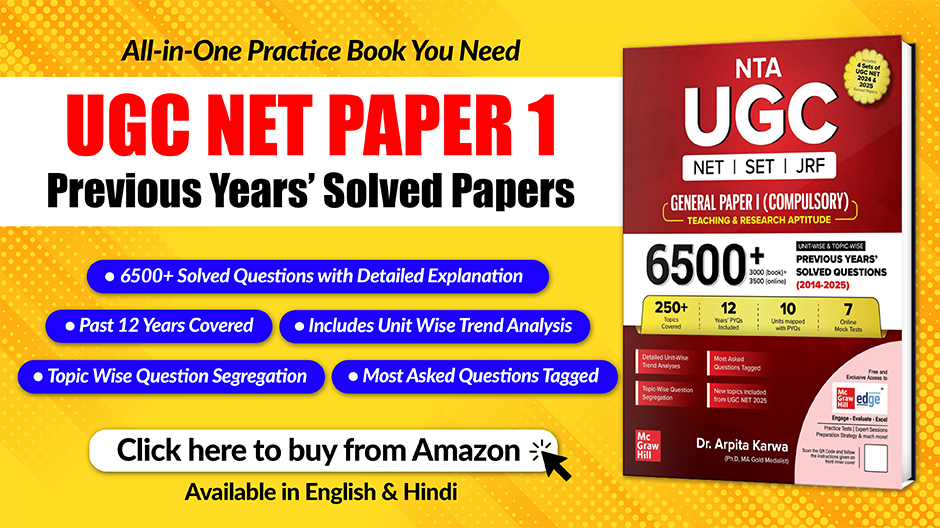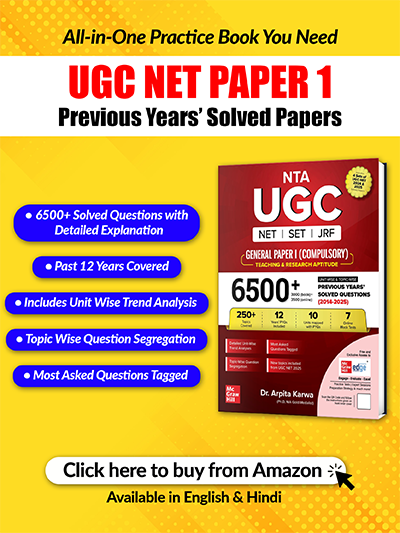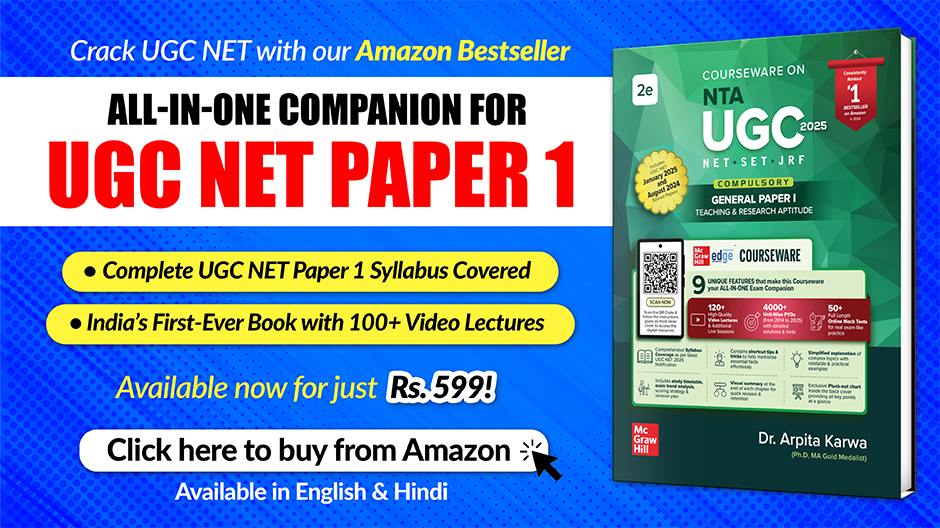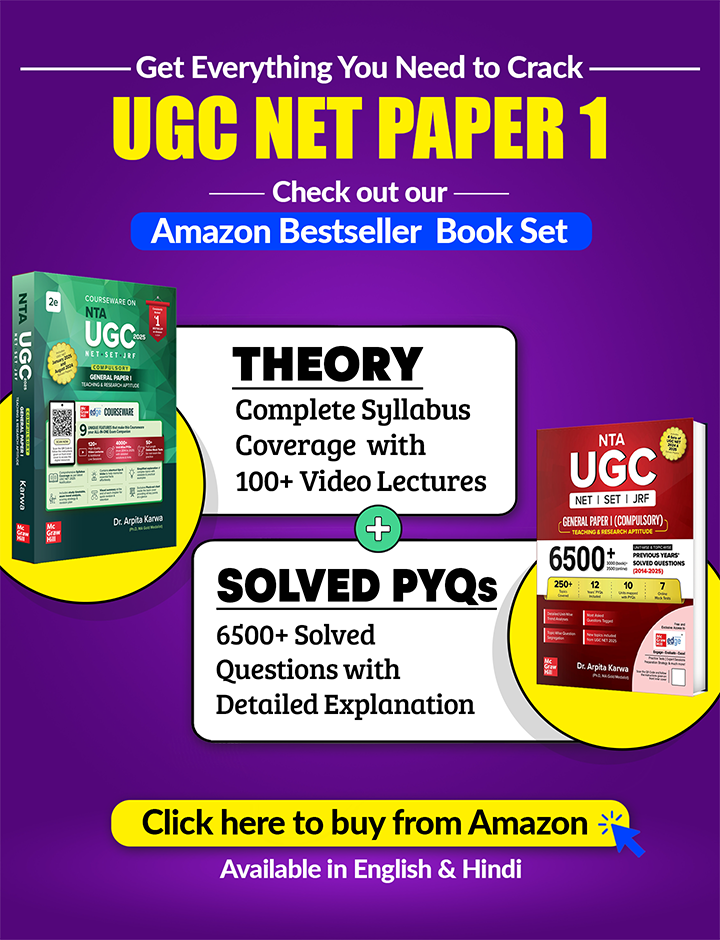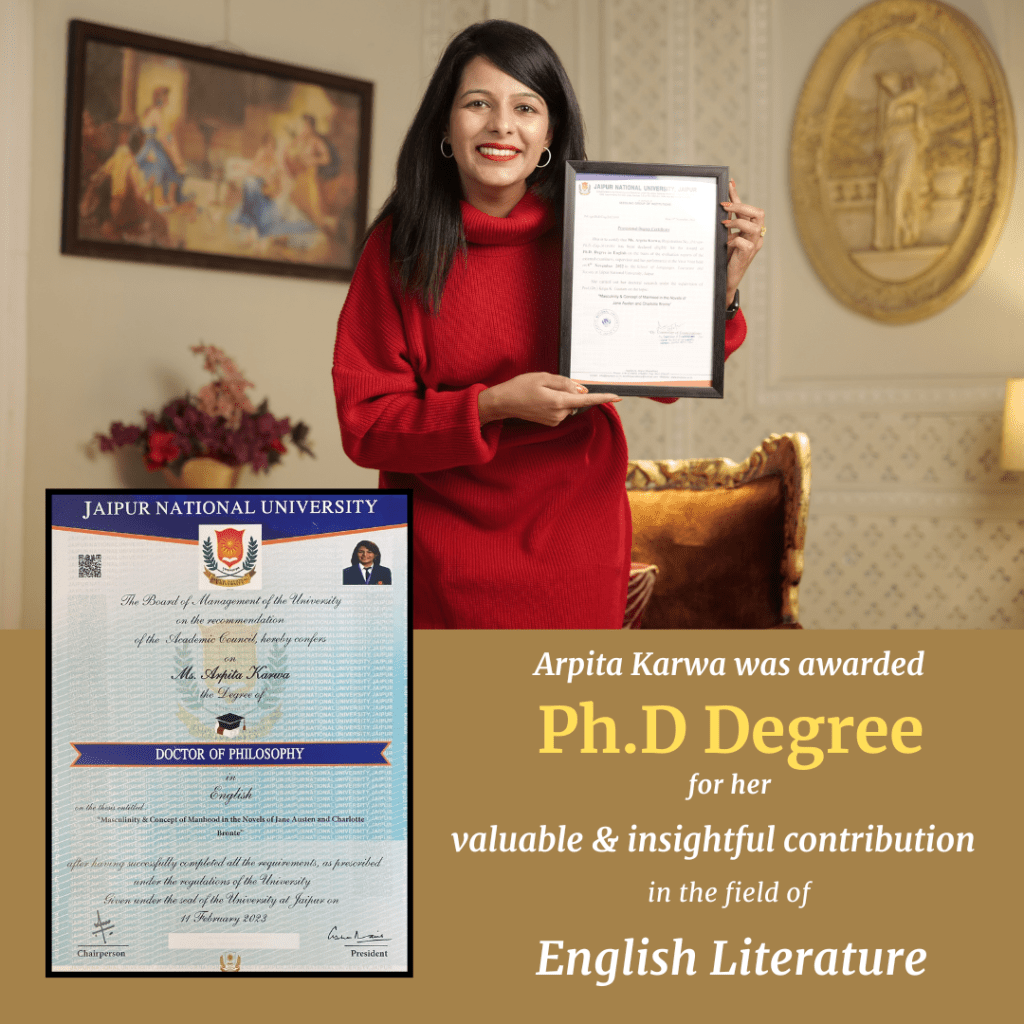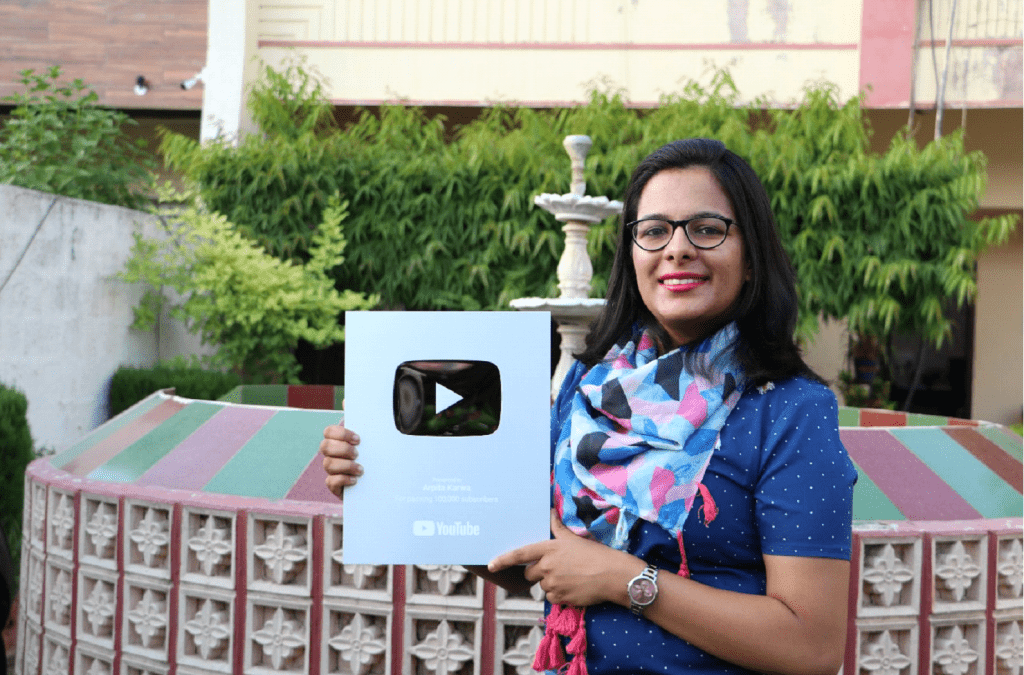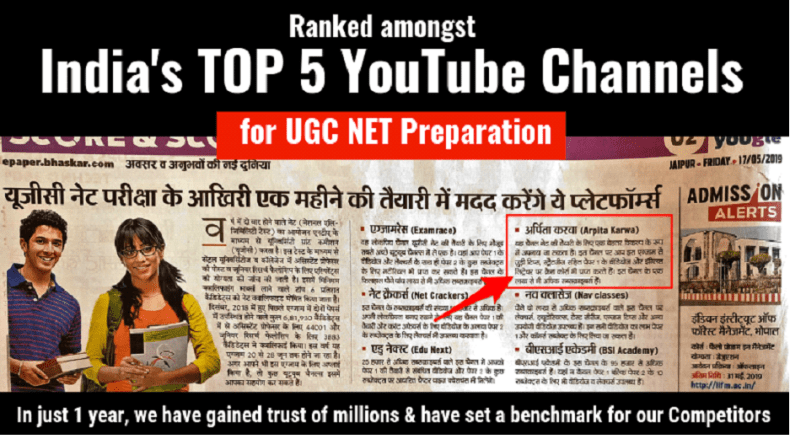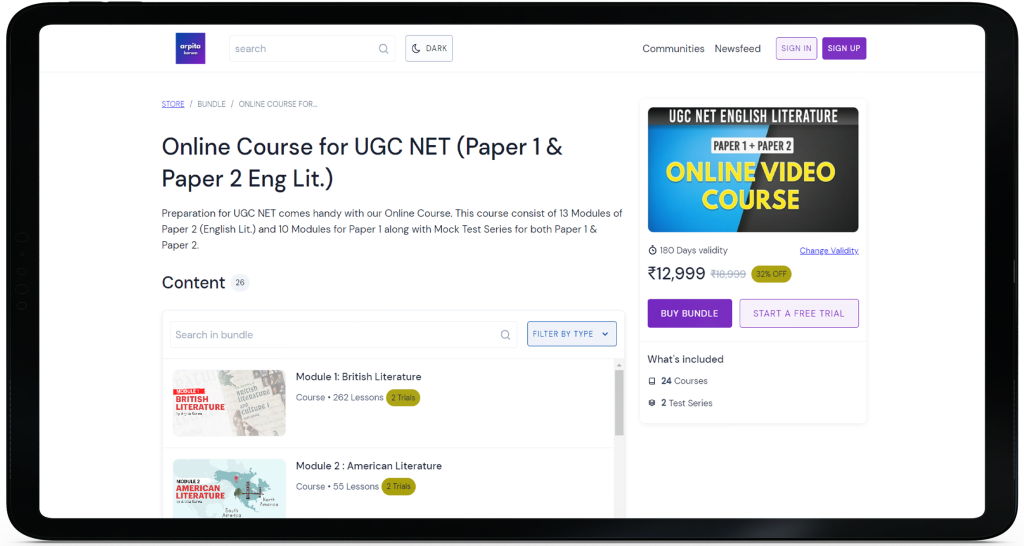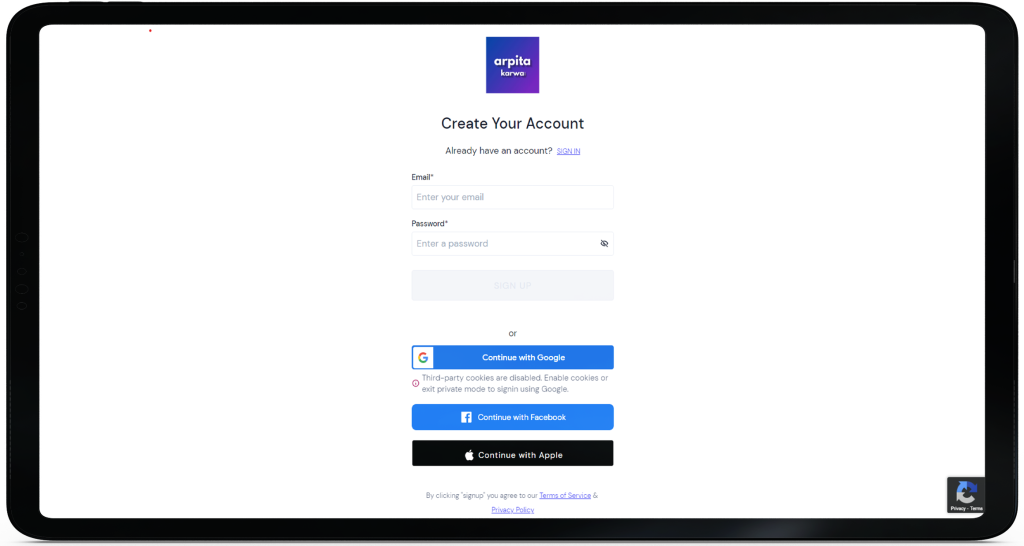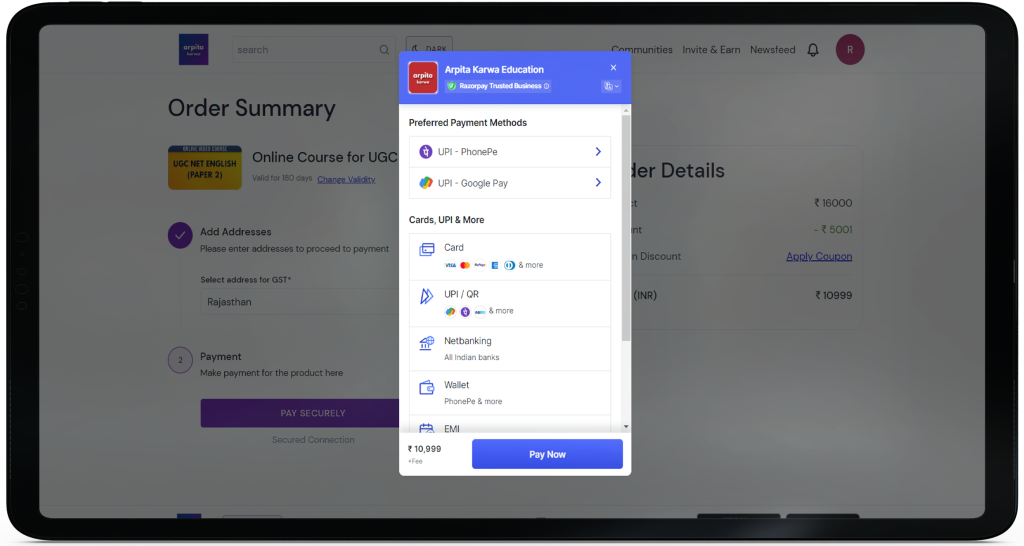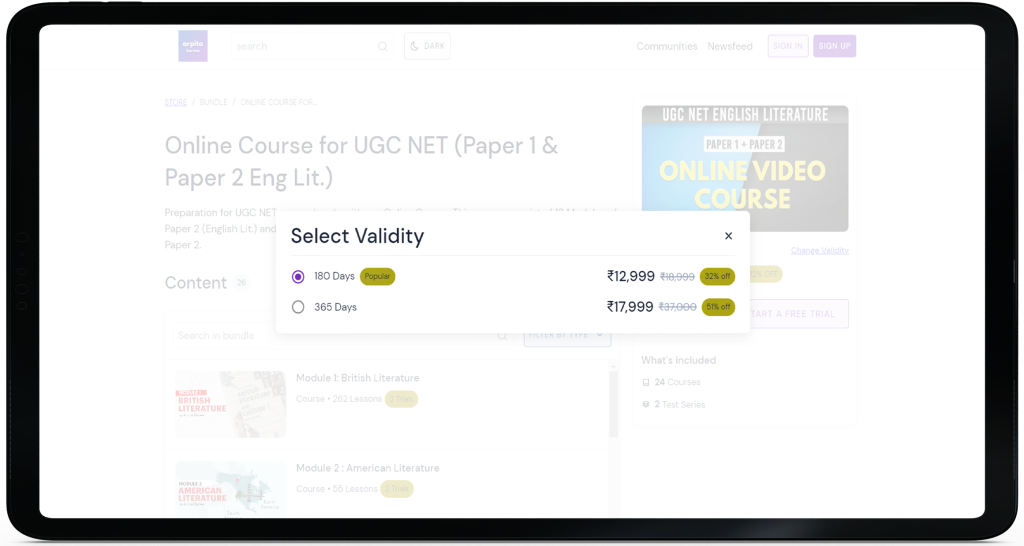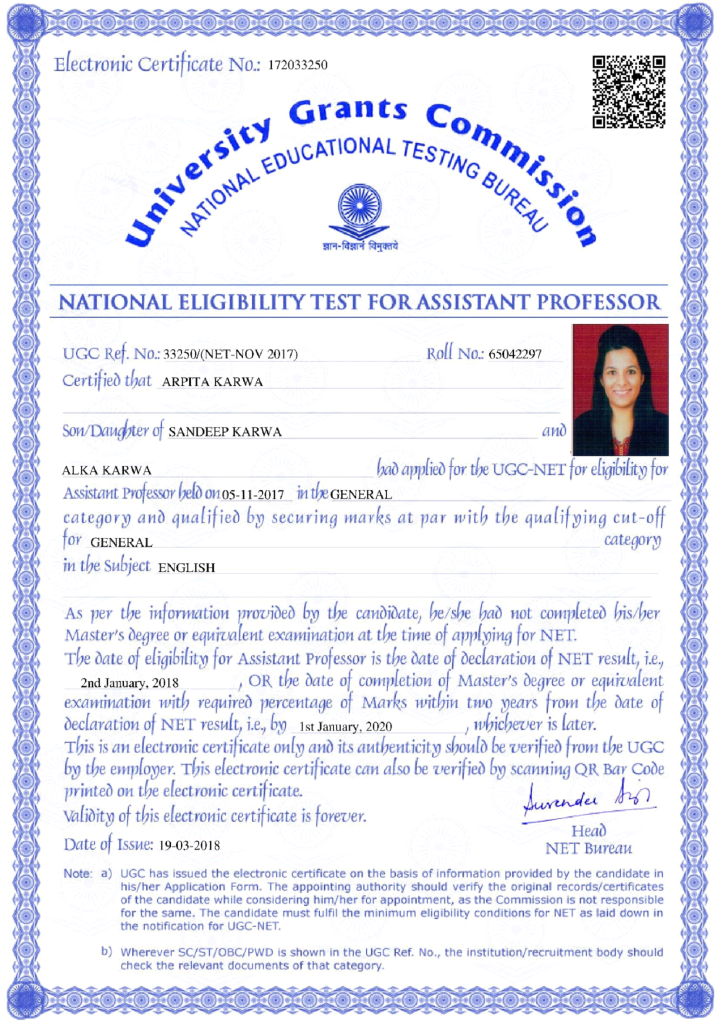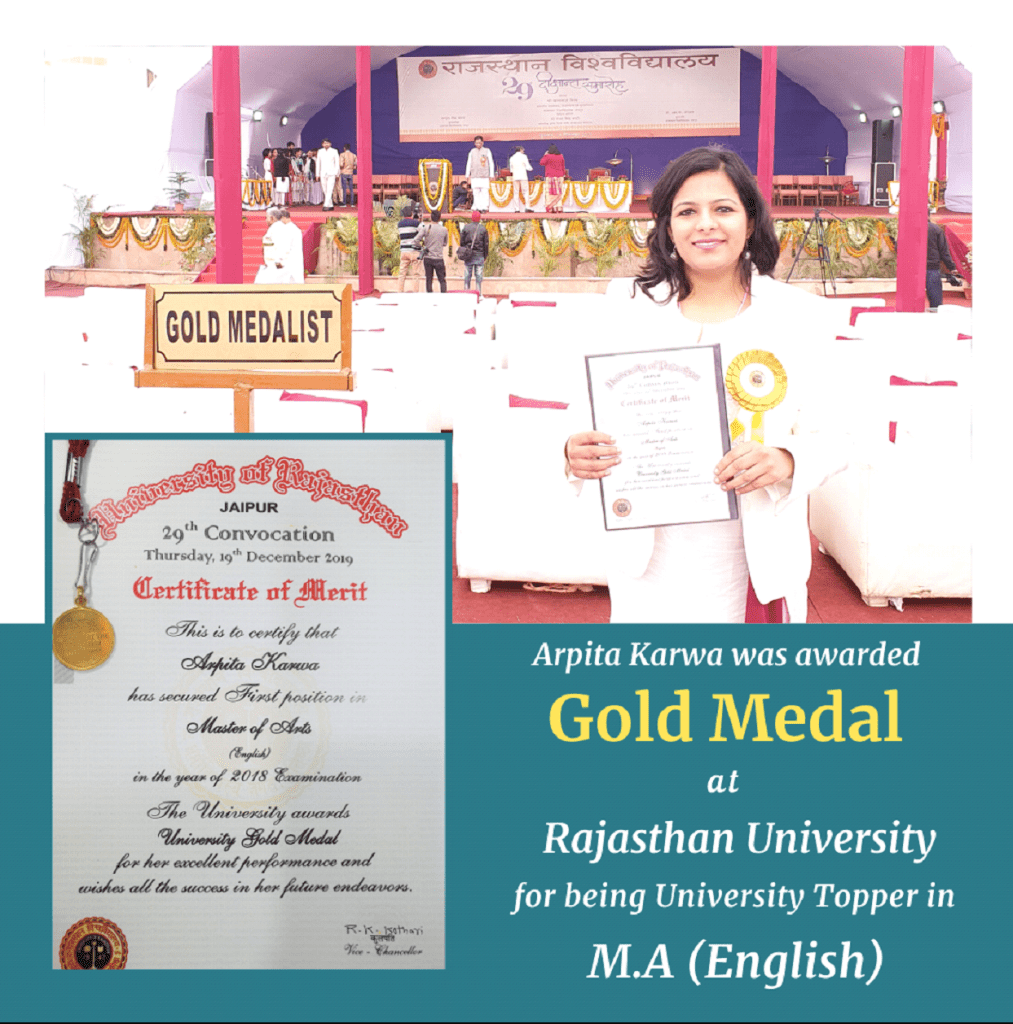June 2025 : Paper 1 (Conducted on 27th June 2025 : Evening Shift)
June 19, 2024 2025-10-24 13:05June 2025 : Paper 1 (Conducted on 27th June 2025 : Evening Shift)
June 2025: Paper 1 (Conducted on 27th June 2025 : Evening Shift)
I.1-5)
Q.1) Number of hardbound books sold by shop A is approximately what percent less than the number of paperback books sold by shop C ?
[1] 32
[2] 36
[3] 38
[4] 42
Correct Answer: 2
Q.2) What is the ratio between total sale by shops A and C together to the total sale by shops Band D ?
[1] 77:106
[2] 73:102
[3] 17:3
[4] 21:27
Correct Answer: 1
Q.3) What is the difference between the average number of hardbound books sold by shops A, B and D and the average number of paper back books sold by shops C and D?
[1] 267
[2] 400
[3] 1570
[4] 1750
Correct Answer: 4
Q.4) Number of total books (hardbound and paperback together) sold by the highest selling shop is what percent higher than the lowest selling shop ?
[1] 50%
[2] 100%
[3] 120%
[4] 150%
Correct Answer: 3
Q.5) What is the ratio between total number of hard bound books sold by shop C and D together and number of paperback books sold by shop D ?
[1] 2:1
[2] 5:4
[3] 3:2
[4] 9:7
Correct Answer: 3
Q.6) CD – ROM stands for :
[1] Compressed Disk Read Only Memory
[2] Compact Device for Reading out Messages
[3] Compact Device for Read/Write Over Mobiles
[4] Compact Disk Read Only Memory
Correct Answer: 4
Q.7) In which conditions, Karl Pearson’s correlation coefficient can be calculated?
A. If means of both the variables are equal
B. If one variable is measured in interval scale and another is measured in ordinal scale
C. If there is linear relationship between two variables
D. If data are obtained in interval or ratio scale for both the variables
E. If direction of relationship between two variables is known
[1] CD
[2] CDE
[3] BDE
[4] ACE
Correct Answer: 1
Q.8) Match the column:
A. Asiddha
B. Badhita
C. Viruddha
D. Savyabhicharra
I. Irrelevant middle term
II. Unproven middle term
III. Contrary middle term
IV. Contradicted middle term
[1] A-I B-II C-III D-IV
[2] A-II B-IV C-III D-I
[3] A-II B-III C-I D-IV
[4] A-III B-IV C-II D-I
Correct Answer: 2
Q.9) Match the column:
A. The numerator of a fraction is increased by 25% and the denominator is increased by 50% leading to a value of 5/[3] The original fraction is ___
B. 4 1/3 – 3 1/2 = ___
C. The fraction equivalent to 40% is ___
D. 0.064/(3.25 x 3.20 – 3.20 x 3.05)
(I) 1/10
(II) 2/5
(III) 5/6
(IV) 2/1
[1] A-II B-III C-IV D-I
[2] A-III B-II C-IV D-I
[3] A-IV B-III C-I D-II
[4] A-IV B-III C-II D-I
Correct Answer: 4
Q.10) Major thrusts of National Policy on Education (NPE), 1986, were :
A. State level planning and coordination through state council for higher education
B. Expansion of open universities and distance education system
C. Establishment of National Assessment Centre PARAKH
D. Conferring autonomous status on selected colleges
E. Establishment of two multidisciplinary education and research universities (MERU) in each state
[1] ACD
[2] CDE
[3] ABD
[4] BCDE
Correct Answer: 3
Q.11) Which are the characteristics of research ?
A. It always aims to develop new theory.
B. It is a scientific process.
C. Logical reasoning is used in decision making during research process.
D. Hypothesis testing is done in every kind of research.
E. It collects and analyses evidences to derive findings.
[1] BCD
[2] ABC
[3] BCE
[4] CDE
Correct Answer: 3
Q.12) Arrange the phases of life cycle analysis for information on environmental effects of products (from first to last) :
A. Inventory
B. Initiation
C. Impact
D. Improvement
[1] ABDC
[2] CDAB
[3] DCBA
[4] BACD
Correct Answer: 4
Q.13) Vyapti in Indian Logic refers to :
[1] Logical contradiction
[2] Direct perception
[3] Invariable concomitance
[4] Verbal testimony
Correct Answer: 3
Q.14) Match the column:
A. Goals are decided in the context of the needs of a nation
B. Feedback is obtained at local level
C. Team Teaching
D. Time for completion of a task is same for all students
I. Modern Teaching Technology
II. Traditional Teaching Technology
IIl. Instructional Technology
IV. Educational Technology
[1] A-IV B-II C-I D-III
[2] A-IV B-III C-I D-II
[3] A-II B-I C-IV D-II
[4] A-III B-I C-IV D-II
Correct Answer: 2
Q.15) Which of the following is not an element of communication within the communication process cycle?
[1] Channel
[2] Receiver
[3] Sender
[4] Time
Correct Answer: 4
Q.16) Arrange the steps of evaluating a deductive argument :
A. Assess the truth of premises
B. Identify premises and conclusion
C. Testlogical structure
D. Determine soundness
[1] ABCD
[2] ACBD
[3] BCAD
[4] DBAC
Correct Answer: 3
Q.17) The Rigveda comprises ___ hymns.
[1] 1028
[2] 10600
[3] 1064
[4] 11300
Correct Answer: 1
Q.18) Arrange chronologically the establishment of given digital initiatives :
A. National Digital Library (N.D.L.)
B. Shodhganga
C. Academic Bank of Credit (A.B.C.)
D. DIKSHA
[1] CDBA
[2] DBCA
[3] BDAC
[4] BCAD
Correct Answer: 3
Q.19) How many Millenium Development Goals (MDG) were adopted by United Nations ?
[1] 8
[2] 7
[3] 5
[4] 10
Correct Answer: 1
Q.20) Which of the following are considered as fallacies of relevance ?
A. Ad hominem
B. False cause
C. Straw man
D. Red herring
[1] AD
[2] BC
[3] ACD
[4] ABC
Correct Answer: 3
Q.21) What are the factors to be considered while selecting a communication media ?
A. No need to think about receiver
B. Reliability
C. It should be costly
D. Confidentiality
E. Availability
[1] ABC
[2] BCD
[3] CDE
[4] BDE
Correct Answer: 4
Q.22) When was the Paris agreement adopted ?
[1] 5 October 2020
[2] 12 December 2015
[3] 7 November 2018
[4] 8 July 1998
Correct Answer: 2
Q.23) Match the column:
A. The source is not visible to the receiver because of Geographical distance
B. The people are having individual differences, motivation and attitude and anxiety and prejudice
C. With faulty expression, poor translation, ambiguous words
D. With poor quality of audio and video signals, the message may not be sent to target group
I. Technical Barriers to Communication
II. Linguistic Barriers to Communication
III. Psychological Barriers to Communication
IV. Physical Barriers to Communication
[1] A-IV B-III C-II D-I
[2] A-IV B-I C-III D-II
[3] A-II B-I C-IV D-III
[4] A-III B-II C-I D-IV
Correct Answer: 1
Q.24) Match the column:
(Institutions of National Importance (INI) Acts)
A. National Institute of Technology Act
B. Indian Institute of Management Act
C. Indian Institutes of Information Technology Act
D. Institutes of Technology Act
(Year of Enactment)
I. 2017
II. 1961
III. 2007
IV. 2014
[1] A-III B-I C-IV D-II
[2] A-II B-III C-IV D-I
[3] A-IV B-I C-II D-IV
[4] A-II B-IV C-I D-III
Correct Answer: 1
Q.25) In a categorical proposition, the subject and predicate are connected by :
[1] A question
[2] A fallacy
[3] A copula
[4] A mood
Correct Answer: 3
Q.26) Arrange the areas for following shapes in descending order of their values :
A. The area of the curved surface of a cylindrical wire of radius 1.0 mm and length 3.5 cm
B. The surface of a spherical ball of radius 3.5 mm
C. The area of a rhombus having diagonals 1.5 cm and 1.8 cm
D. The area of a circle of diameter 7.0 mm
[1] DBCA
[2] ABCD
[3] BACD
[4] CABD
Correct Answer: 2
Q.27) An IP address consists of a :
[1] 16 – bit integer
[2] 32- bit integer
[3] 64 – bit integer
[4] 96 – bit integer
Correct Answer: 2
Q.28) What is the full form of ARPANET ?
[1] Advanced Research Project Agency Network
[2] Advanced Resource Project Agency Network
[3] Applied Research Project Agency Network
[4] American Research Project Agency Network
Correct Answer: 1
Q.29) Identify the correct statement :
A. If 2^x = 256/✓2 ; then x = 15/2
B. 1/3 of 50% of 150 is greater than ✓576
C. In the merit list of an examination result, the rank of a student is 5th from the top among 20 students. His rank from the bottom of the list is at 15th position
D. In a class of 30 students, the average of weights of 20 students is 45 kg and the rest of students have an average weight of 40 kg. The average weight of the class is 42.5 kg
[1] ABC
[2] BCD
[3] ABD
[4] AB
Correct Answer: 4
Q.30) Under which section of the UGC Act, Inter-University Centres (IUCs) were established ?
[1] 12 (ccc)
[2] 12 (B)
[3] 12 (a)
[4] 12 (h)
Correct Answer: 1
Q.31) The study of how the mind creates knowledge has resulted in what are currently referred to as________ view of Education.
[1] Pragmatic
[2] Idealistic
[3] Metacognitive
[4] Constructive
Correct Answer: 4
Q.32) Find out the ‘RIGHT’ combinations below :
A. Learning a second language takes little time and efforts – Myth
B. All bilinguals easily maintain both languages – True
C. Learning a second language takes little time and efforts – True
D. All bilinguals easily maintain both languages – Myth
[1] AD
[2] BC
[3] AB
[4] CD
Correct Answer: 1
Q.33) Match the column:
(System Name)
A. The Mark I computer
B. IBM-701
C. IBM-650
D. The Universal Automatic Computer One (UNIVAC-1)
(Year/Time period)
I. 1951
II. 1953
III. 1937- 44
IV. 1952
[1] A-III B-IV C-II D-I
[2] A-II B-III C-I D-IV
[3] A-I B-II C-IV D-III
[4] A-IV B-I C-II D-III
Correct Answer: 1
Q.34) For disaster management, following processes must be adopted :
A. Training
B. Migration
C. Mitigation
D. Response
E. Detection
[1] BC
[2] BE
[3] ABC
[4] ACDE
Correct Answer: 4
Q.35) Arrange the following in sequence as they are introduced in increasing order of age of the students :
A. Taxonomy of Educational Objectives
B. Team Teaching
C. Personalised system of Instructions
D. Concept of Interaction model of Teaching
[1] ADBC
[2] BADC
[3] CADB
[4] CDAB
Correct Answer: 1
Q.36) Which of the following statements is false in the context of research ?
[1] Inductive and deductive reasoning are applied in the research process.
[2] Verifiable findings are derived by the research process.
[3] Research is conducted to find answers of meaningful questions scientifically.
[4] It necessarily improves quality of functioning of the area in which it is conducted.
Correct Answer: 4
Q.37) Match the column:
(Ecosystem)
A. Eurasia
B. South and South East Asia
C. North America
D. South America
(Biogeographic Realms)
I. Neotropical realm
II. Palearctic realms
III. Nearctic realm
IV. Oriental realm
[1] A-II B-IV C-III D-I
[2] A-II B-I C-III D-IV
[3] A-III B-IV C-I D-II
[4] A-II B-III C-IV D-I
Correct Answer: 1
Q.38) Match the column:
(Context of Research)
A. Researcher continues data collection and analyses till the satisfactory findings are derived
B. Study of change in emotional maturity of the students with passage of time
C. Study of the effect of one variable on other variable in controlled situation
D. Study of social problems faced by working women
(Method)
I. Survey
II. Experimental
III. Developmental
IV. Grounded theory
[1] A-IV B-III C-I D-II
[2] A-III B-IV C-II D-I
[3] A-IV B-III C-II D-I
[4] A-III B-IV C-I D-II
Correct Answer: 3
Q.39) Select correct order of finalising a research problem :
A. Defining the research problem
B. Selecting the area of research
C. Finding the research gap
D. Study of reference material and reports of previous researches
E. Identifying a research problem
[1] BCDAE
[2] DBCEA
[3] BDCEA
[4] DBACE
Correct Answer: 3
Q.40) A sum of Rs. 10,000 is invested for a term of 2 1/2 years at an interest rate of 8% compounded annually. The amount on maturity will be :
[1] Rs.12520.50
[2] Rs.12024.62
[3] Rs.12130.56
[4] Rs.11664.48
Correct Answer: 3
Q.41) Choose the ‘WRONG’ statement :
A. Machine Language is a low level language
B. ‘FORTRAN’ is a high level language
C. ‘C’ is a low level language
D. ‘SQL’ is alow level language
[1] AB
[2] BC
[3] AC
[4] CD
Correct Answer: 4
Q.42) Choose the correct statements :
A. MS-Word saves the files in “.doc” format
B. SQL server is a local network server
C. ‘MATLAB’ is a mathematical software
D. Bootstrap loader is an example of entertainment software
[1] AB
[2] AC
[3] CD
[4] AD
Correct Answer: 2
Q.43) To experience the educational value, one must extract its net meaning through:
[1] Reflections
[2] Communication
[3] Consequences
[4] Decisions
Correct Answer: 1
Q.44) Arrange the following steps in model of listening in sequence :
A. Interpreting
B. Responding
C. Remembering
D. Hearing
E. Understanding
[1] ECABD
[2] DECAB
[3] DABCE
[4] ABDEC
Correct Answer: 2
I.45-48) A person who takes the trouble to form his own opinions and beliefs, will feel that he owes no responsibility to the majority for his conclusions. If he is a genuine lover of truth, if he is inspired by a passion for seeing things as they are and an abhorrence of holding ideas which do not conform to facts, he will be wholly independent of the assent of those around him. When he proceeds to apply his beliefs in the practical conduct of life, the position is different. There are then good reasons why his attitude should be less inflexible. The society in which he is placed is an ancient and composite growth. The people from whom he dissents have not come by their opinions, customs and by a process of mere haphazard.
These opinions and customs all had their origin in a certain real supposed fitness. They have certain depth of root in the lives of a proportion of the existing generation. Their congruity with one another may have come to an end. That is only one side of the truth. The most zealous propagandism cannot penetrate to them. In common language, we speak of a generation as something possessed of a kind of exact unity, with all its parts and members homogenous. Yet, plainly it is not this. It is a whole but a whole in a state of constant flux, its factors and elements are eternally shifting. It is not one but many generations.
Q.45) One’s position is usually different when a person ___
[1] turns a deaf ear to what others say
[2] pays attention to what people say
[3] proceeds to apply his beliefs in the practical conduct of life
[4] remains ignorant of happenings around him
Correct Answer: 3
Q.46) A genuine lover of truth will :
[1] appreciate the quality of food
[2] make compromise with situation
[3] criticise what he does not like
[4] be wholly independent of the assent of those around him
Correct Answer: 4
Q.47) According to the passage, customs and traditions originate from :
[1] Conflicts of life
[2] Ignorance
[3] The old generation
[4] Beliefs
Correct Answer: 3
Q.48) According to the author, the attitude of self – opinionated person in the practical social life should be:
[1] flexible
[2] rigid
[3] indifferent
[4] proactive
Correct Answer: 1

